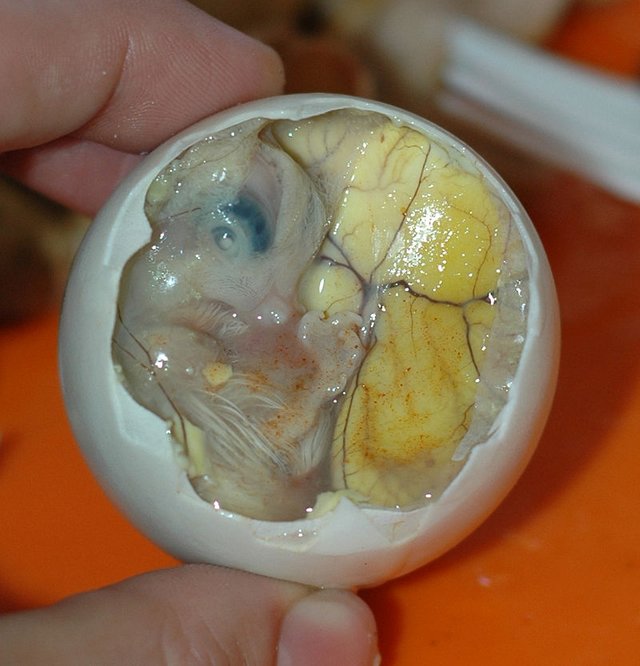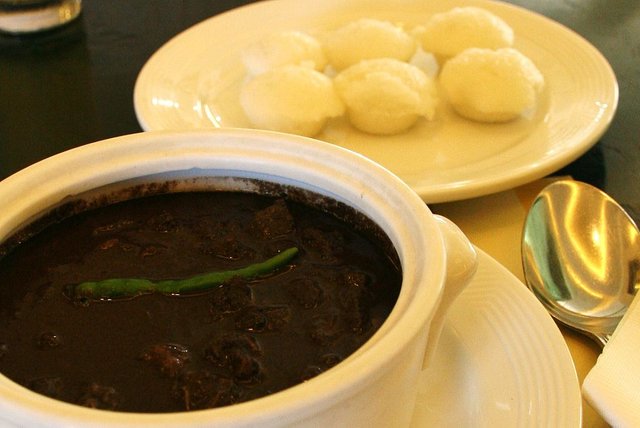Unusual Filipino Food
Filipino cuisine includes a selection of foods that, whilst normal for locals, may be a little unusual for the global tourist
If beauty is in the eye of the beholder, perhaps there is a relatively similar dynamic when it comes to taste. Some reality TV shows play on this dynamic, presenting contestants with challenges to eat foods which, according to their own culturally-conditioned palate, are just downright disgusting. It is not so much that the foods are automatically and universally strange, or necessarily unhealthy or unhygienic, but simply that they are unusual to some cultures. From a Western perspective for example, the idea of eating insects is hard to fathom, yet in China, it is considered normal, and can be witnessed in many a marketplace or restaurant.
For the Westerner, the Philippines is often considered accommodating due to the renowned local hospitality, the widespread use of English, and the easy access to western-style restaurants and take-out food establishments. Lift this veil however, and a variety of local cuisine exists that would test the palate of many a tourist. So whether you are out for a culinary challenge, enjoy expanding your horizons and experiences, or are just plain curious, the following is a selection of fascinating and unusual foods for those visiting this exuberant, tropical nation.
Balut
Any foray into the colorful world of Filipino food will almost definitely result in the gourmet’s discovery of balut, arguably the most famous of the Philippines’ less globally-acquired tastes. One of my daughters once asked me that if chickens came from eggs, then how could we eat the eggs? Might we not inadvertently eat a baby chicken? I reassured her that the eggs we buy in supermarkets are not the kind that come with cute little chicks tucked cosily away inside. With balut, however, that is exactly what you get; an egg, with a visible two-week-old duck embryo boiled in its shell. It is usually cracked upon, the juices sucked out, then with a bit of salt, the duck and remaining components are eaten, feathers, bones, beak and all!

Dinuguan
The root word of dinuguan is “dugo”. Dugo means blood. Specifically, dinuguan is a pork blood stew, the meat and/or offal of which is simmered in a delicious concoction of pig blood, vinegar, garlic and chili. Whilst blood puddings and stews are not isolated to the Philippines, it is nevertheless often shunned by the inexperienced eater due to, well, its ingredients, and the rather dark color of the soup, indicative of its eponymous ingredient.

source
Ice-cream hamburger
Yes, that’s right, an ice-cream hamburger. Local vendors in Manila found that ice-cream, in a bun, is not too bad a combination, at least in the eyes of many a local. Even more interesting, are the flavors of ice-cream; cheese, coconut, and purple yam (ube) to name a few. This one is not so much a challenge as it is an enigma. Many a westerner would no-doubt find the combination of bread and ice-cream not quite right.
Tamilok Worms
Located in the strikingly beautiful, idyllic island of Palawan, the adventurous tourist may find themselves facing one of the biggest culinary challenges to be found throughout the archipelago. Juxtapose, if you think apt, against this beautiful backdrop, the very slimy, ponderous, long and full-bodied tamilok worms found in the mangrove wood along the many beaches and mangrove zones of this tropical haven. Now, the best news about these delicacies is that they require no cooking; just find the wood, cut it open, pull them out, dip them in a little local calamansi (a kind of small, lemon-like fruit) juice, and live and quivering, down the hatch they go! Make sure, of course that you strip the wood pulp from both within and without the body first. Naturally you wouldn’t want to eat that!
Sizzling Sisig
Attributed to Aling Lucing, who came up with Sizzling Sisig in Angeles City, Pampanga, as the name suggests, this dish is a sizzling concoction of fried pork head, cheeks and liver. Further flavor comes from the addition of onions, vinegar and calamansi juice. The unusual aspect for foreigners in this dish is the inclusion of various parts of the pig’s head, including the ears.
These of course, are only a handful of the more well-known dishes from within a much larger selection of Filipino foods and locales that many a global traveller may have yet to experience. One need only inspect the local marketplaces, restaurants and street stalls to see that the above-mentioned examples are only the tip of the iceberg for the adventurous food-lover, and that a comprehensive array of dishes and pulutan (finger-foods) await the tastebuds. So, if you wish to count yourself amongst the more adventurous traveller, the kind that stays clear of the globally ubiquitous fast-food chains and their imitations, the Philippines offers a culinary selection you are likely to find novel, if not downright bizarre!
I love how you highlighted balut! This is by far one of the tastiest street delicacies the Philippines is known for.
I always offer balut to my foreign friends. Sadly, tamilok isn;t available in Manila, otherwise they'd get that too!